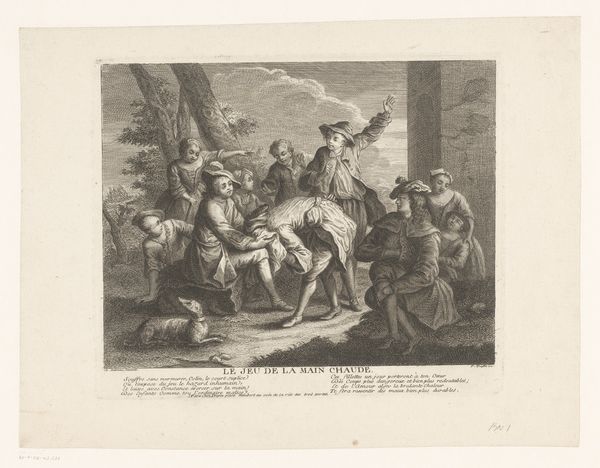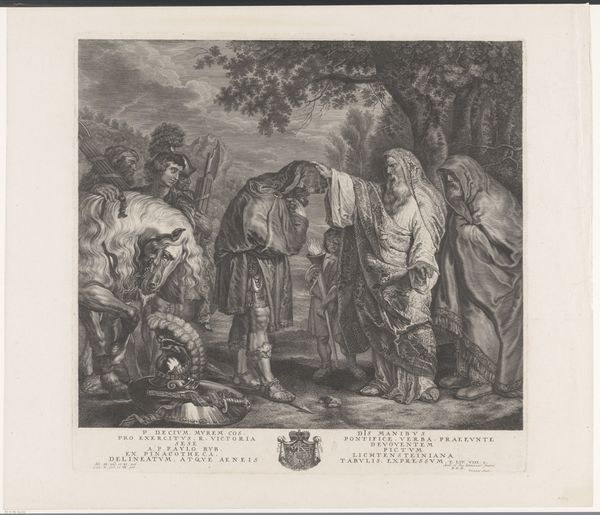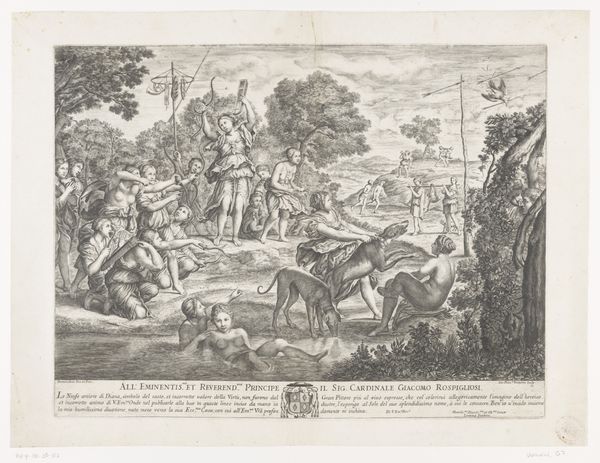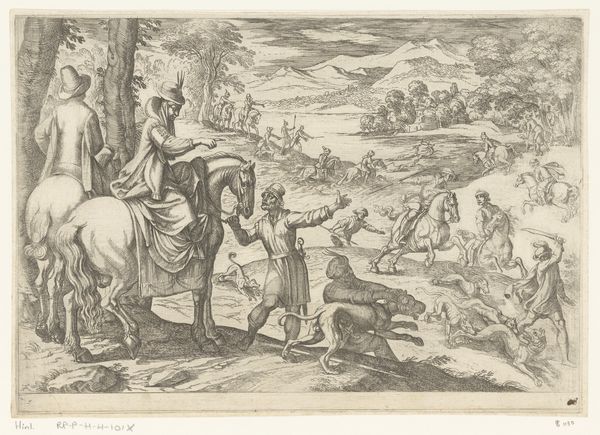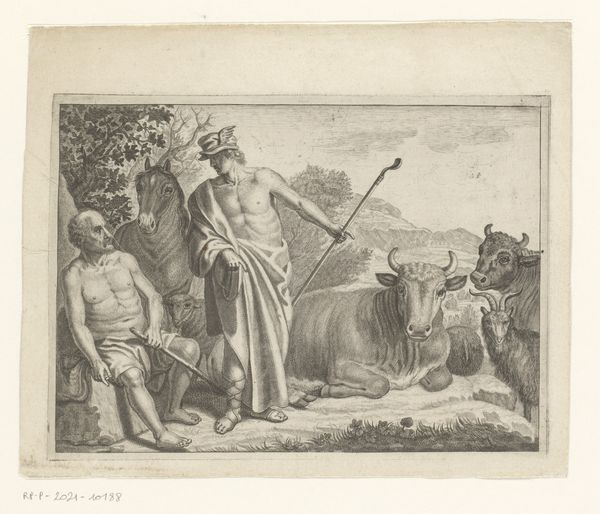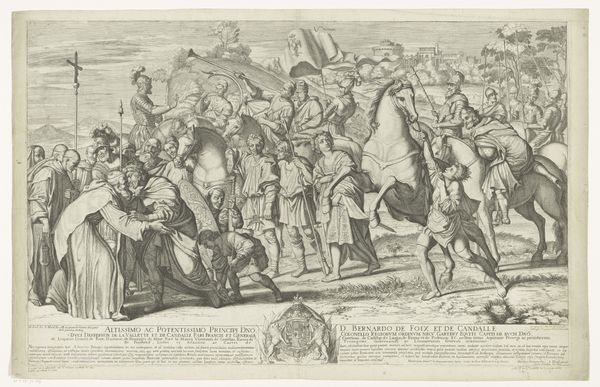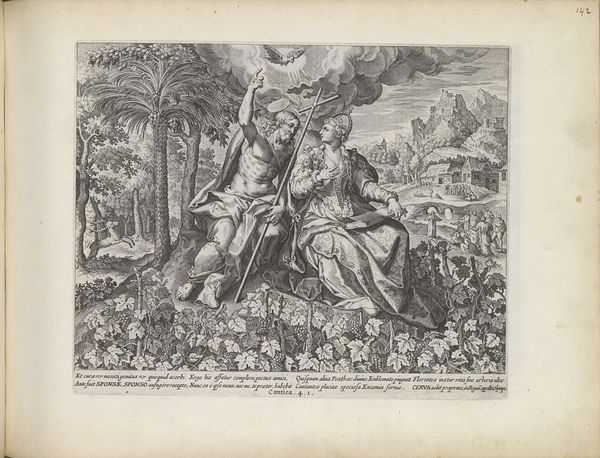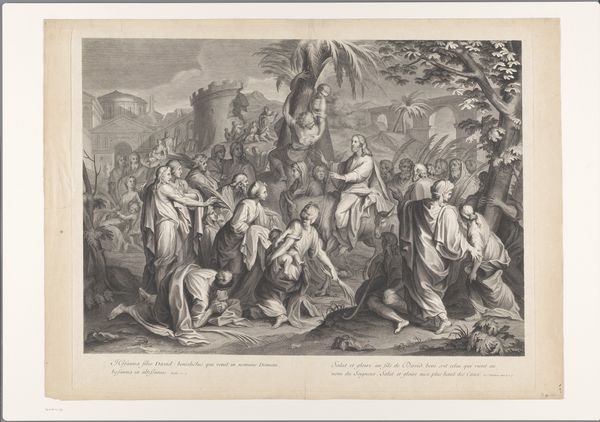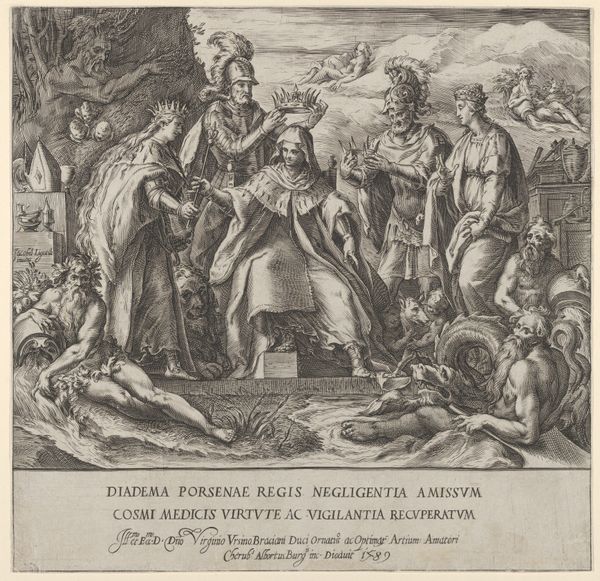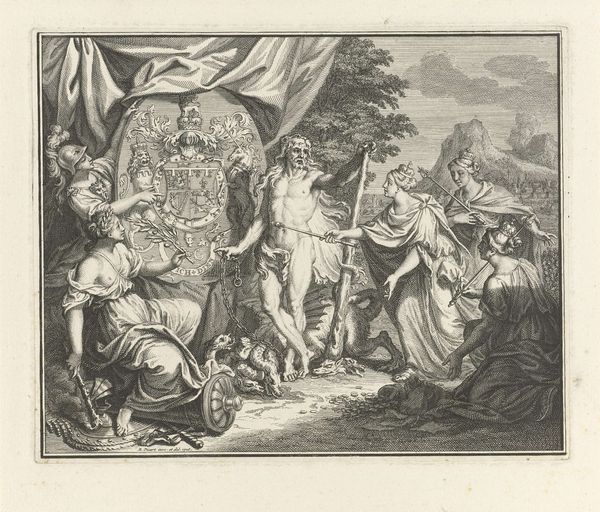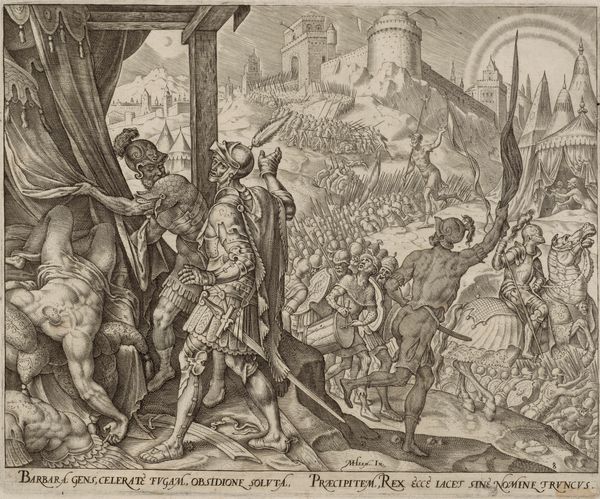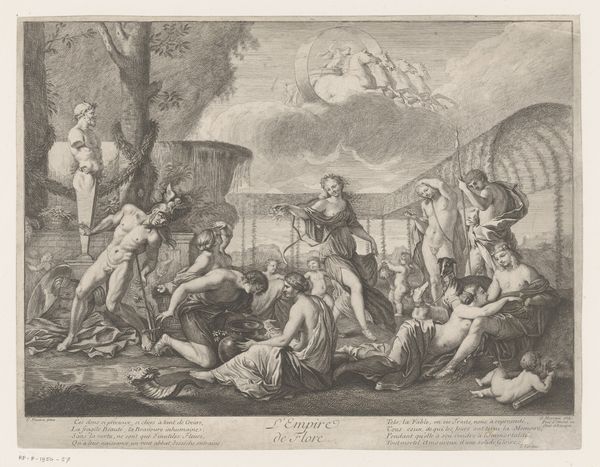
print, etching, engraving
#
narrative-art
# print
#
etching
#
landscape
#
classical-realism
#
figuration
#
horse
#
sketchbook drawing
#
history-painting
#
engraving
Dimensions: height 586 mm, width 518 mm
Copyright: Rijks Museum: Open Domain
Gustav Adolph Müller created this print, “Decius Mus stuurt de lictoren weg”, in the 18th century. It depicts a Roman leader, Decius Mus, dismissing his bodyguards, the lictors. Prints like this one played a crucial role in shaping historical and political consciousness in the 1700s. They circulated widely, illustrating stories of virtue and leadership. Decius Mus was a popular subject, embodying self-sacrifice for the good of Rome. In the context of the Enlightenment, this image speaks to a fascination with classical republican ideals and their relevance to contemporary society. Consider the institutions that supported the making and distribution of prints like this. Academies trained artists in history painting, while printmakers disseminated these images to a broader public. The Rijksmuseum, where this print is housed today, is another such institution, one that continues to shape our understanding of the past through art. To truly understand this work, we can consult historical texts, political treatises, and museum archives. Art history reminds us that meaning is always tied to the social and institutional contexts in which art is made, viewed, and collected.
Comments
No comments
Be the first to comment and join the conversation on the ultimate creative platform.
